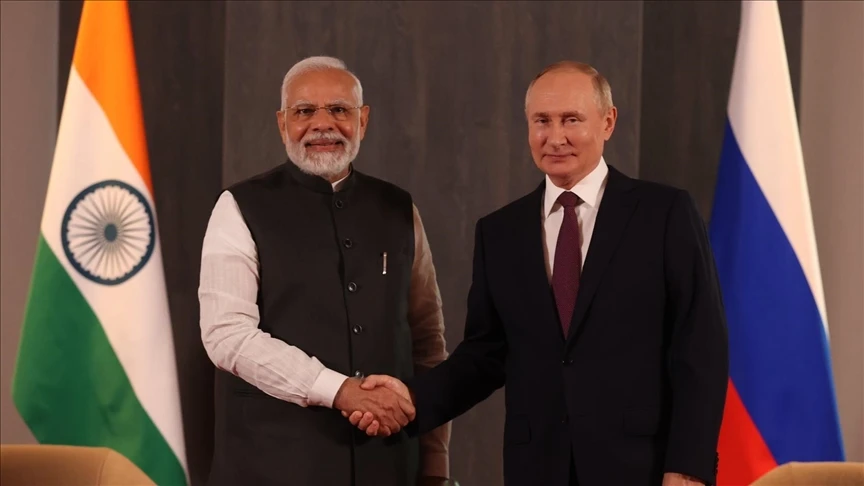Russian oil exporters charge record prices in India, evading Western sanctions
 In meeting with Putin, India’s Modi calls for end to Ukraine war, India, September 16, 2022, Anadolu Agency
In meeting with Putin, India’s Modi calls for end to Ukraine war, India, September 16, 2022, Anadolu Agency
Russian oil exporters are imposing higher prices for their oil in India than at any time since the onset of the conflict in Ukraine. This increase comes as more shippers and intermediaries engage in the trade, mitigating the effects of Western sanctions on Moscow.
Since Russia’s full-scale invasion of Ukraine in February 2022, exporters have had to offer significant discounts to encourage shipping companies and traders to move their crude and take on the risk of sanctions.
Among the restrictions, the United States and the European Union imposed a price cap of $60 per barrel on Russian oil sales, meaning Western shippers and insurers can only participate in the Russian oil trade if the oil is sold below this price limit.
Russian exporters have recently struck deals to sell their flagship Urals oil to Indian refiners at discounts of $3 to $3.5 per barrel to the global Brent crude benchmark, according to five traders and Indian refining officials.
This is the narrowest discount for Urals since Reuters started monitoring Russian oil prices in India in early 2023 when the discount was as high as $20 per barrel. It suggests deals above the price cap, as Brent is trading at about $82 per barrel, although this also depends on freight costs.
The shrinking discount shows Russia’s success in finding new buyers for its oil. India has no sanctions against Moscow and became the biggest buyer of Russian seaborne crude ahead of China and Turkey after European refiners stopped imports.
It also reflects an increase in shippers carrying Russian oil.
“You’re seeing greater numbers of ships that have found ways to circumvent sanctions by operating outside Western jurisdiction,” said Michelle Wiese Bockmann, principal analyst with maritime data group Lloyd’s List Intelligence.
Over 630 tankers – some of them older than 20 years – are currently involved in shipping Russian oil, as well as sanctioned Iranian crude, according to Lloyd’s List Intelligence.
The operators are largely based in China and the UAE, the data group says, and account for about 14.5% of the overall global tanker fleet.
Before the Ukraine war, this so-called shadow tanker fleet totaled around 280-300 vessels, according to Lloyd’s List Intelligence.
The price cap initially created a shortage of ships for Russian oil sales to India and China, with freight rates reaching up to $20 million per tanker per one-way voyage, according to traders.
But freight costs for shipping Russian oil to India have declined to about $5 million to $5.5 million in June, getting close to pre-war levels, they say. Lower freight costs mean Russian oil companies earn more from the sales.
This drop comes even after U.S. sanctions on Russian shipping group Sovcomflot cut 15 tankers from Moscow’s fleet.
The result is that Russian exporters have been able to charge higher prices. So far this year, the price of Urals oil at Baltic ports has averaged $69.4 per barrel compared with $54.8 in the same period of 2023, according to LSEG data.
Still cheap
Even with a narrower discount, Russian crude is still cheaper for Indian refiners than competing supplies from countries such as Saudi Arabia.
Indian purchases of Russian oil reached a nine-month high in April, ship tracking data showed. India is the second largest importer of oil in the world after China.
“We are taking as much Russian oil as we can to save on import cost,” said a source with an Indian refiner, who asked not to be named as he is not allowed to speak to the media.
Indian Prime Minister Narendra Modi has promised to bolster energy ties with Russia.



